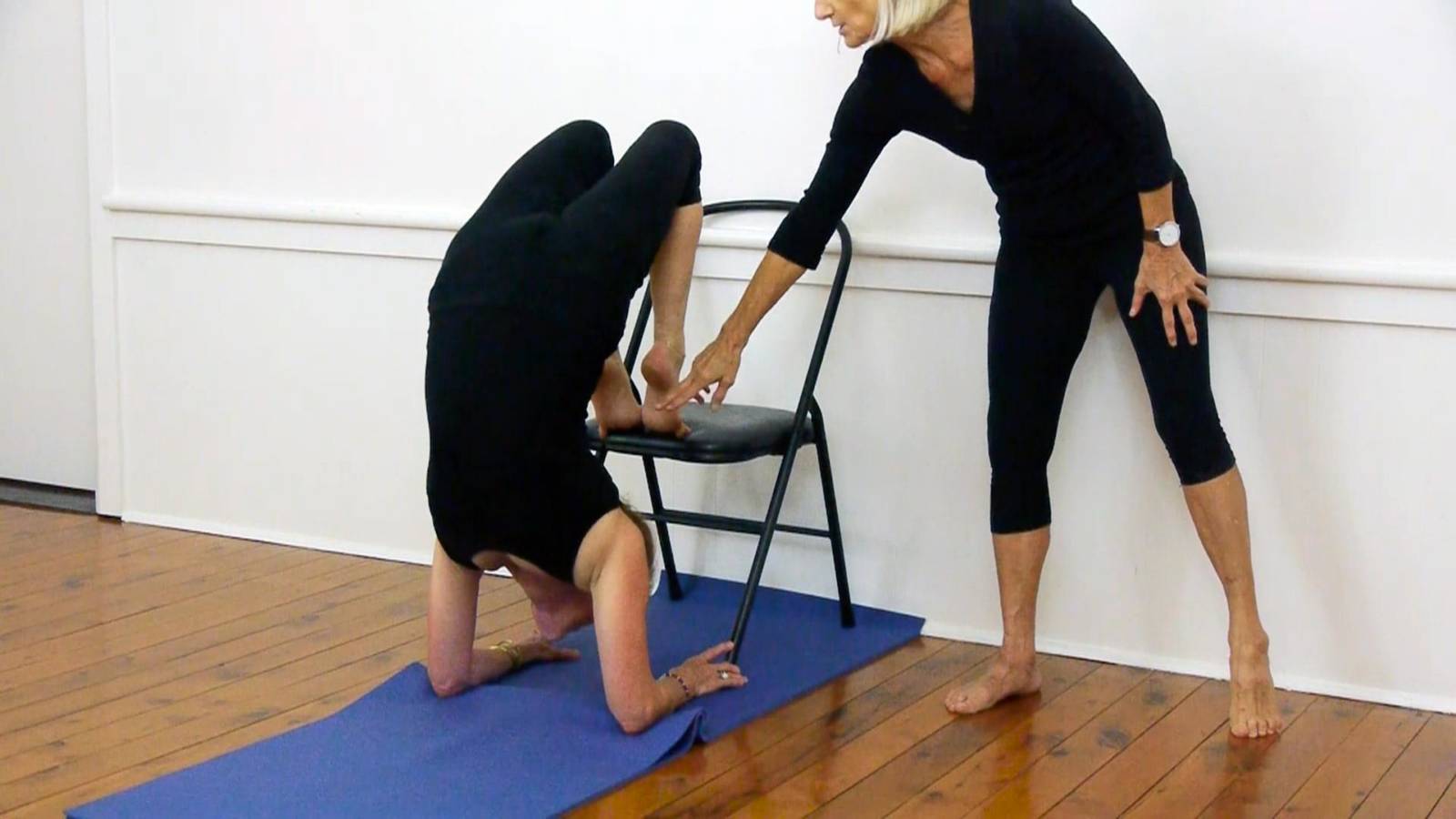What is Vrishikasana?
Vrishikasana, or Scorpion Pose, is an advanced and invigorating asana in the practice of Iyengar yoga. This challenging inversion is named after the scorpion, as the posture resembles the arched shape of a scorpion’s tail. Vrishikasana demands both strength and flexibility, making it a rewarding pose for those seeking to deepen their yoga practice.
How and when is it done?
To perform Vrishikasana, start in a forearm plank position with the elbows placed directly under the shoulders. The forearms should be parallel to each other, and the palms firmly pressed into the ground. Engage the core muscles and lift the hips towards the ceiling, creating an inverted V shape with the body. From here, slowly begin to walk the feet towards the elbows, allowing the hips to lift higher. Gently lift one leg off the ground, engaging the glutes and thigh muscles. Gradually, lift the second leg to come into the full expression of Scorpion Pose. The backbend in this posture is deep and requires open shoulders and a flexible spine.
Vrishikasana is best practiced under the guidance of an experienced yoga teacher. It demands a strong foundation in basic yoga poses, especially forearm plank, Sirsasana Preparation (or Dolphin Pose), and Urdhva Dhanurasana. The preparatory poses will help build the necessary strength and flexibility required for Scorpion Pose. It’s also crucial to warm up the body thoroughly before attempting this advanced inversion, as it puts significant pressure on the wrists, shoulders, and spine.
What poses go well with it?
This asana complements various yoga poses and can be incorporated into a sequence in several ways. It naturally follows arm balances and hip-opening poses, as it requires both upper-body strength and hip flexibility. Plank variations, such as side plank, can help build the core strength necessary for Scorpion Pose. Additionally, heart-opening poses like Bhujangasana, Setu Bandha Sarvangasana, Urdhva Dhanurasana, and Ustrasana can help open the chest and shoulders, preparing the body for the backbend in Vrishikasana.
What are its benefits?
The benefits of Vrishikasana extend beyond physical aspects. This pose challenges practitioners mentally and emotionally, encouraging focus and concentration. Inversions, in general, promote blood circulation to the brain, revitalizing the mind and enhancing clarity. They also stimulate the nervous system and help balance the endocrine system. Regular practice of Scorpion Pose can improve balance, strengthen the arms, shoulders, and back muscles, and increase flexibility in the spine and hips.
Furthermore, Vrishikasana promotes courage and perseverance, as mastering this pose takes time and dedication. The journey towards achieving Scorpion Pose fosters patience and self-awareness, emphasizing the importance of embracing both successes and setbacks in one’s yoga journey.
Bottom Line
In conclusion, Vrishikasana, or Scorpion Pose, is an advanced and transformative asana in Iyengar yoga. When practiced mindfully and with proper alignment, this pose can bring physical, mental, and emotional benefits. It is essential to approach this challenging inversion with respect for the body’s limitations and to seek guidance from an experienced instructor. Incorporating Vrishikasana into a well-rounded yoga practice can enhance strength, flexibility, and concentration, paving the way for a deeper and more fulfilling journey on the yogic path.

